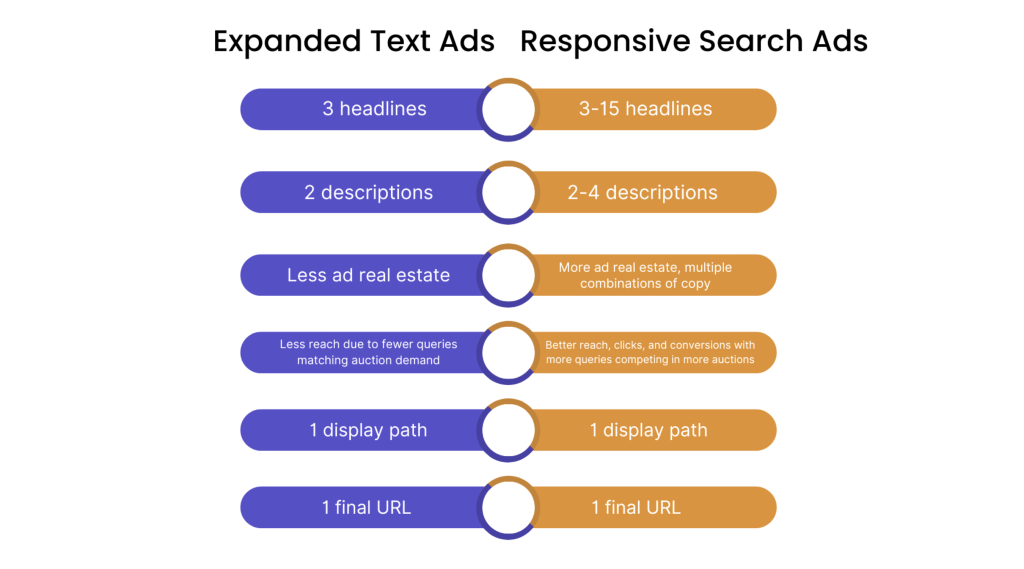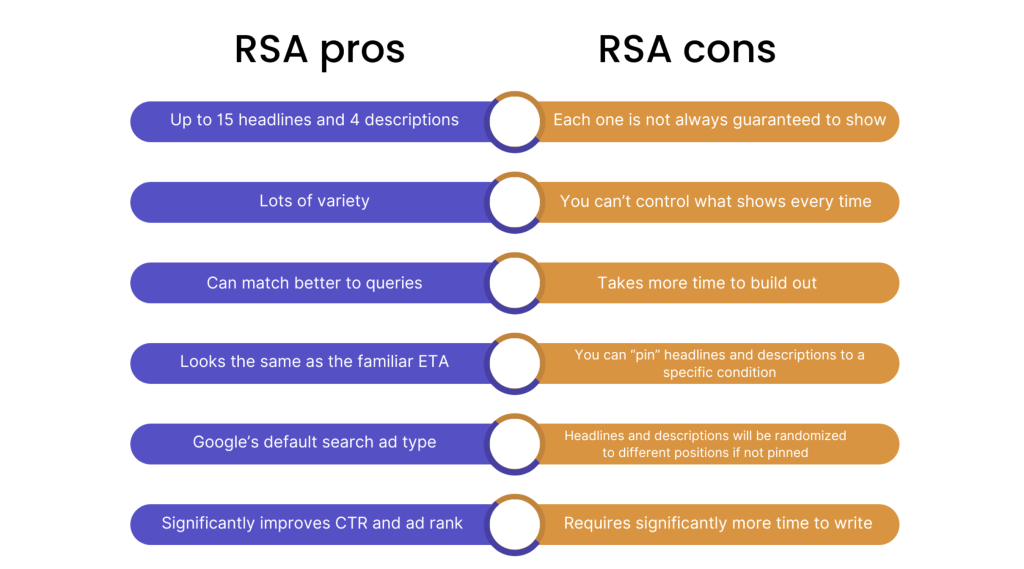Congratulations! You’ve made it through the first month of Google’s move to the default search ad format, responsive search ads (RSAs) – a major shift away from its expanded text ads (ETAs) of the past. If you still have questions about RSAs and their impact on recruitment search advertising, this blog will tell you what you need to know:
- What are responsive search ads?
- Why has Google retired expanded text ads?
- How do RSAs compare to ETAs?
- What are the benefits of RSAs? Drawbacks?
- What are RSA best practices for your Google recruitment advertising?
But first …
If you’re reading this blog, you may already be a recruitment marketer using MOJO, Joveo’s industry’s leading programmatic job advertising solution. Rest assured that MOJO has supported Google’s move to responsive search ads as the recommended ad format since Expanded Text Ads were sunsetted on June 30th 2022. Joveo will keep MOJO updated with important features of the Google Ads platform, to keep our clients’ recruitment advertising campaigns running smoothly.
You may not know that MOJO supports more than Google Ads. In fact, MOJO is the frontrunner in supporting the creation, distribution, combined management, and reporting of Google Ads, Facebook ads and job site ads all in one single, convenient view. It’s the leading programmatic platform to give you combined strategic insight into all your recruitment advertising initiatives (whether that’s job boards, search engines, social media and display advertising). Now, that’s hard to beat.
1. What are responsive search ads?
RSAs are based on the premise that the more headlines and descriptions you enter, the more opportunities Google Ads machine learning has to serve ads that more closely match your potential recruits’ search queries, which can improve your ad performance.
Using multiple headlines and descriptions, Google Ads assembles the text into multiple ad combinations in a way that avoids redundancy. Unlike ETAs, Google lets you provide up to 15 headlines and four descriptions for a single RSA.
In any given ad, a maximum of three headlines and two descriptions will be selected to show in different combinations and orders. Over time, Google Ads will test the most promising ad combinations, and learn which combinations are the most relevant for different queries.
2. Why has Google retired expanded text ads?
Google has made RSAs its default ad type for several reasons. For recruitment advertisers, this means:
- Machine learning (ML) enables better ad performance:RSAs essentially allow for continuous testing to determine which job ad content is most effective. The high number of possible ad combinations generate more data, which Google analyzes (using ML) to help improve recruitment campaign performance in terms of better auction competitiveness, clicks, and conversions.
- Ads can track more closely with changing candidate behavior: In a tight job market influenced by mixed economic signals, candidate sentiment and behaviors can change quickly. Google’s push toward RSAs gives recruitment advertisers a better way to adapt to shifting market trends, without creating individual static ads and testing them manually.
- Easier account optimization and performance: Google wants advertisers to use RSAs because it gives their ML algorithms more data to work with. This allows Google to make more recommendations based on account performance, helping to streamline that experience for faster, better results.
3. How do RSAs compare to ETAs?
Here’s a quick refresher: ETAs only allow for up to three headlines and two descriptions, and those never change position. With the elements firmly in place, you have slightly more control over your job ad copy.
On the other hand, RSAs allow up to 15 different headlines and four descriptions. This is fantastic because you’re able to fit various headlines and descriptions to match up better to queries, but the tradeoff is that you’ll never know exactly which combination of headlines and descriptions Google will choose to serve at any given time. But, as mentioned above, a maximum of three headlines and two descriptions will be selected to show in different combinations and orders in any ad.
Here’s a summary of the main features of each ad: One more thing: While RSAs allow more headline and description options, the character count for these fields remains the same as ETAs: up to 30 characters for headlines and up to 90 characters for descriptions.
One more thing: While RSAs allow more headline and description options, the character count for these fields remains the same as ETAs: up to 30 characters for headlines and up to 90 characters for descriptions.
4. What are the benefits of RSAs? Drawbacks?
By dynamically combining more headlines and descriptions, RSAs are clearly different from ETAs. However, the head-spinning number of ad permutations also creates a lack of control in ad copy, and it goes without saying that you’ll need to spend more time thinking up and writing different headlines and descriptions.
Luckily, Google helps out by providing suggestions when you’re creating RSAs.
You’ll have a pin option for up to three headlines and two descriptions. Here, you can choose a specific headline or description to be guaranteed to show when space on the search engine results page (SERP) allows. However, pinning isn’t recommended unless truly necessary, as it will restrict the automatic variant testing Google can do on your RSAs.
Here’s a quick summary of RSA pros and cons: 5. What are RSA best practices?
5. What are RSA best practices?
- Fill out every portion of the ad – all 15 headlines and four descriptions – whenever possible
- Include top-performing keywords in your ad copy
- Refresh ad copy regularly, so job seekers have something new to look at
- Take advantage of the shuffled previews Google displays to see what your ad will look like
Happy advertising with Google RSAs for Search campaigns!
Overwhelmed by all the technical jargon and marketing chops needed? Don’t worry – sit back, relax, and let our world-class team create, manage and optimize performance campaigns. Request a demo of Joveo solutions today. And follow us on Twitter and LinkedIn, where we’re always working to help you get the most out of your recruitment advertising.















